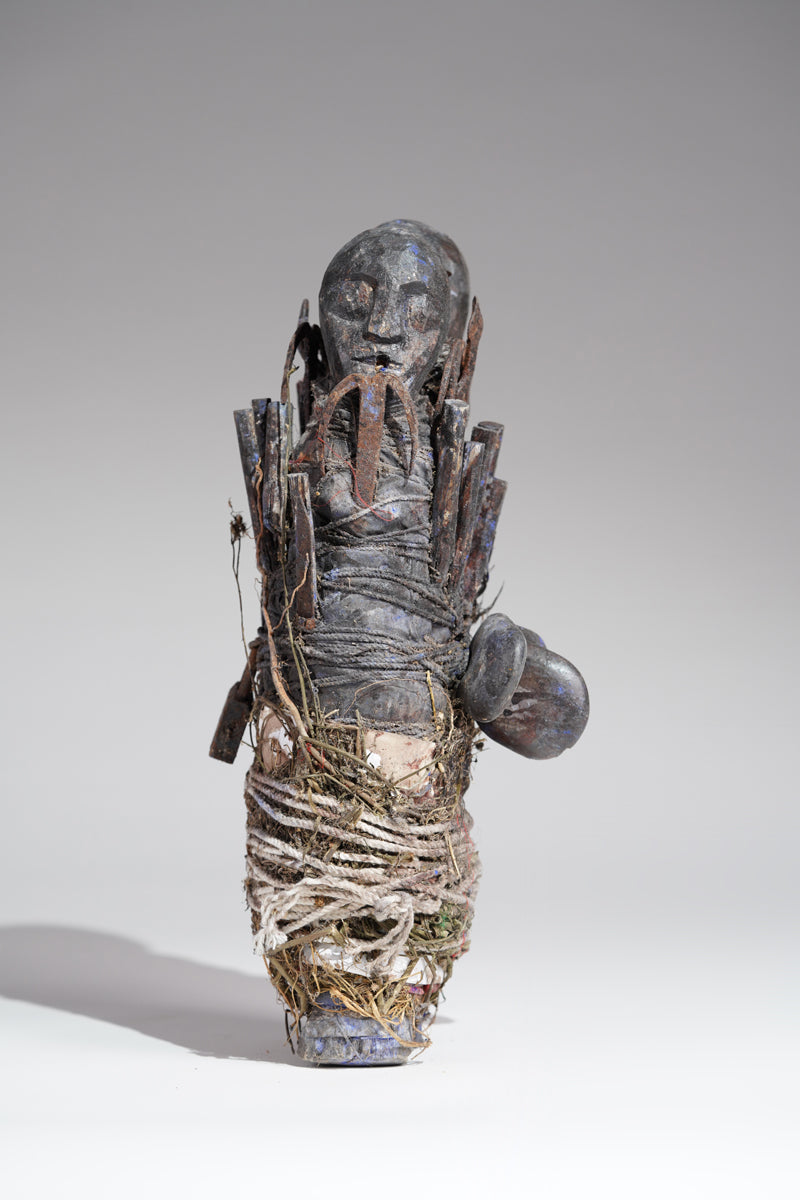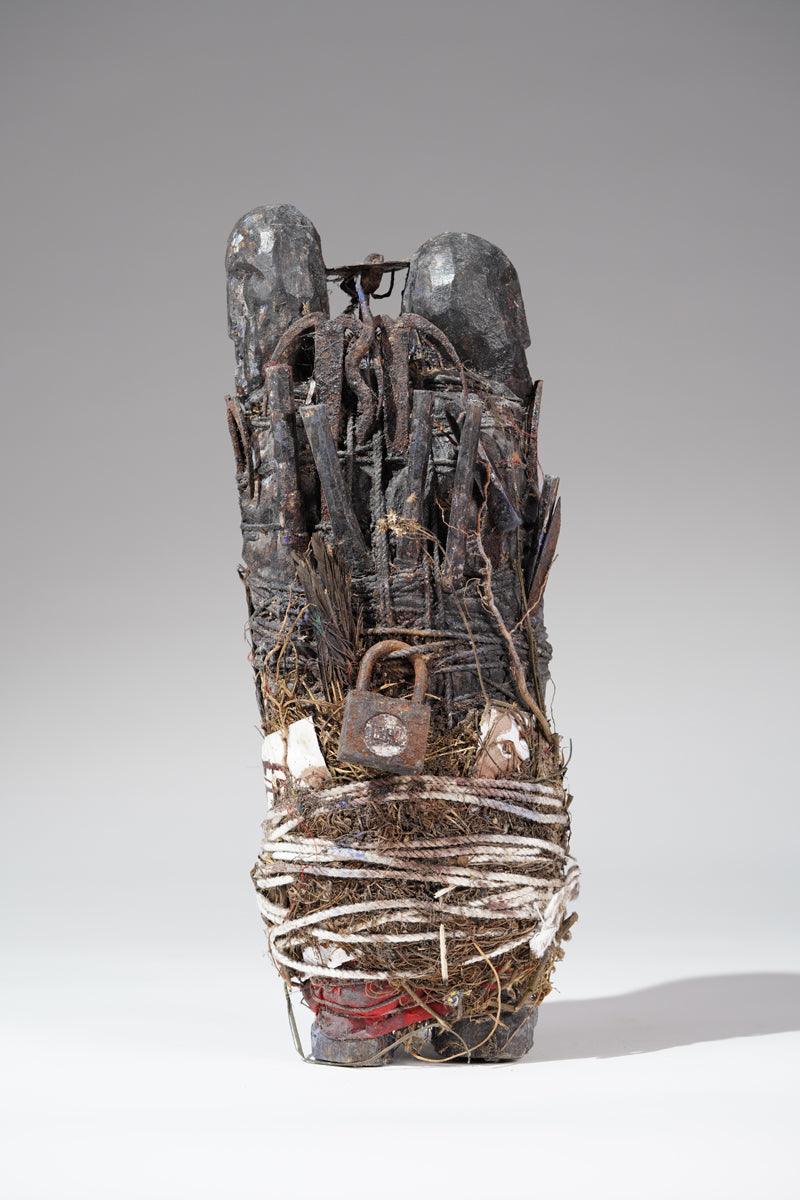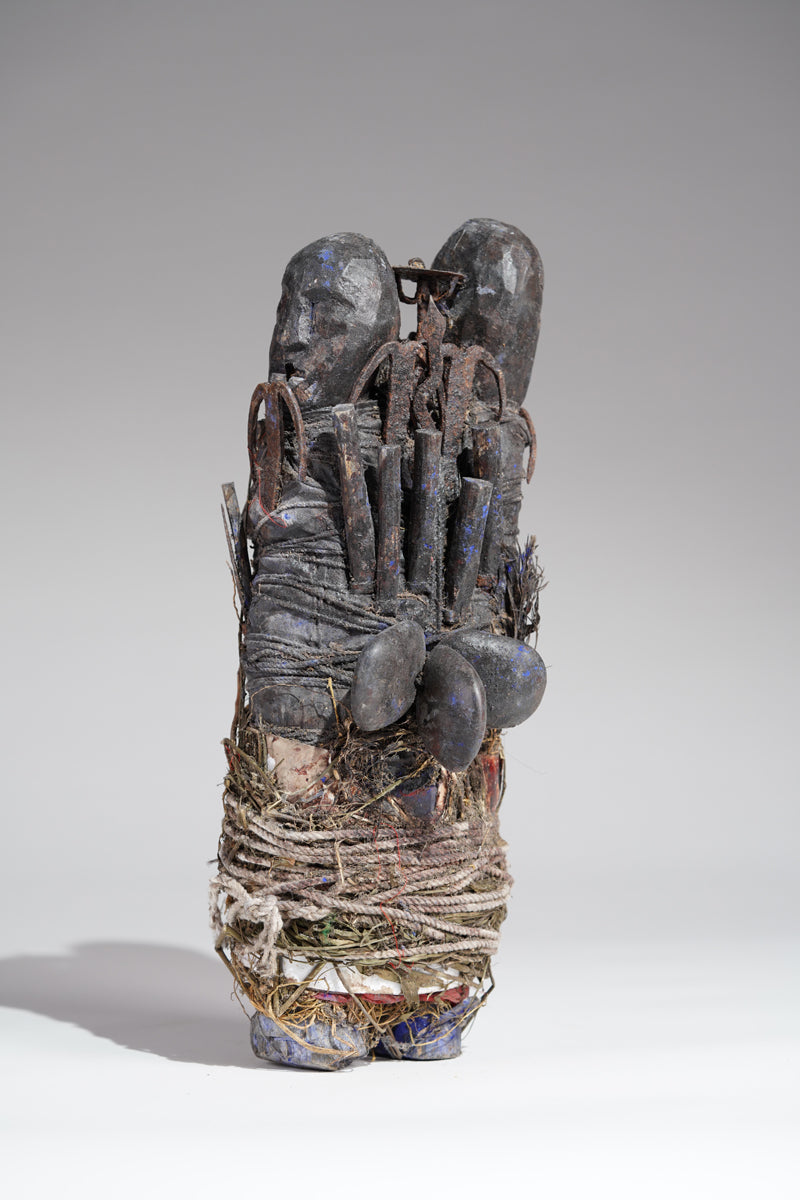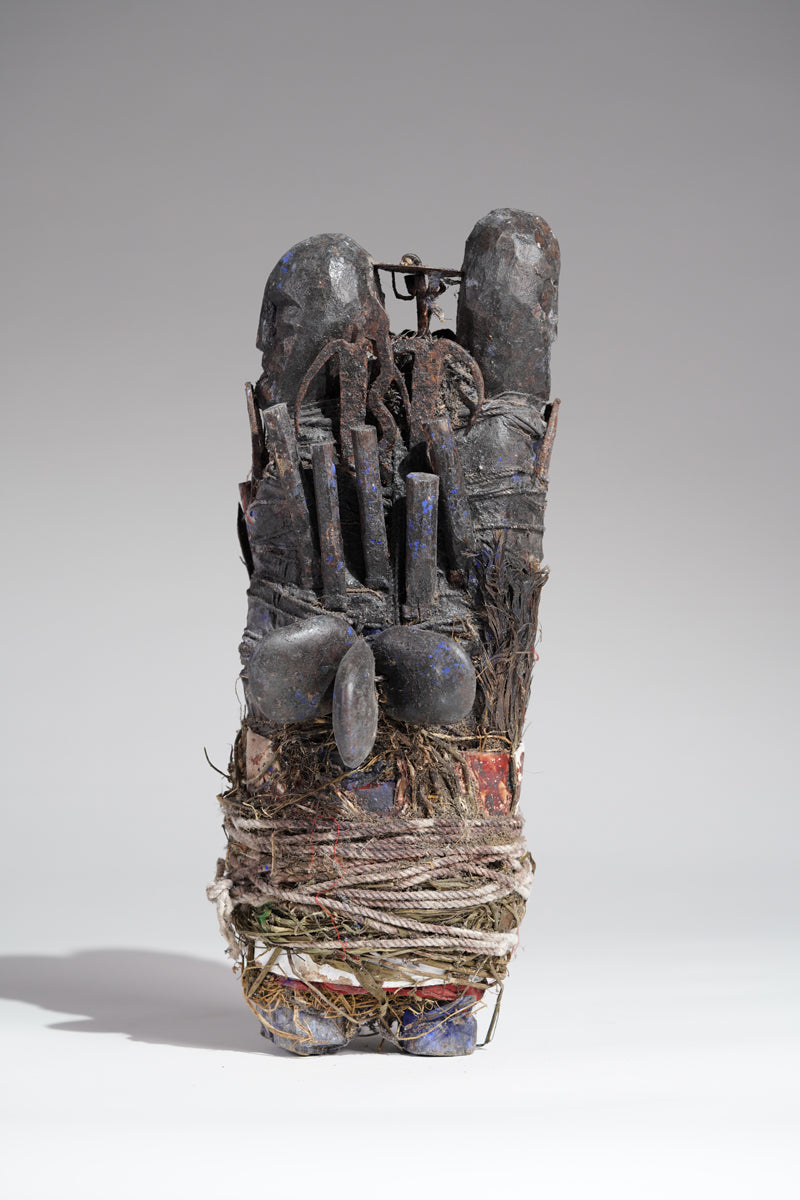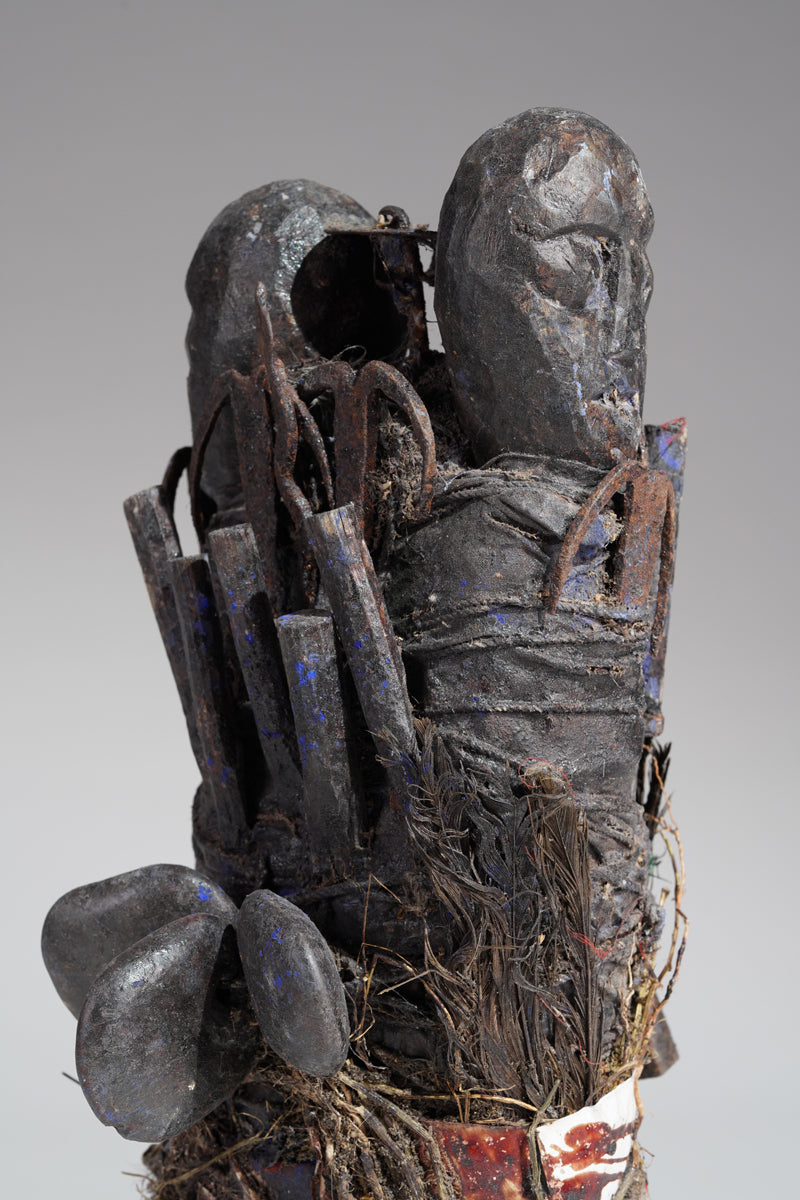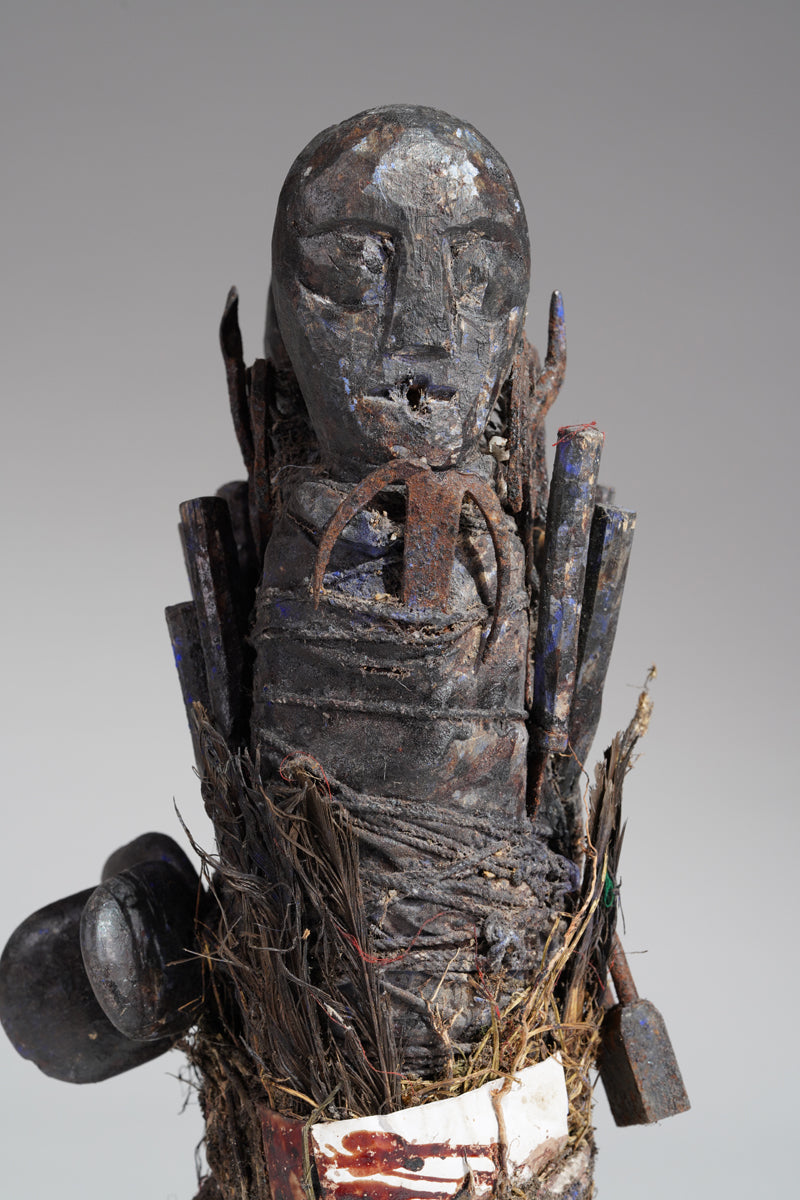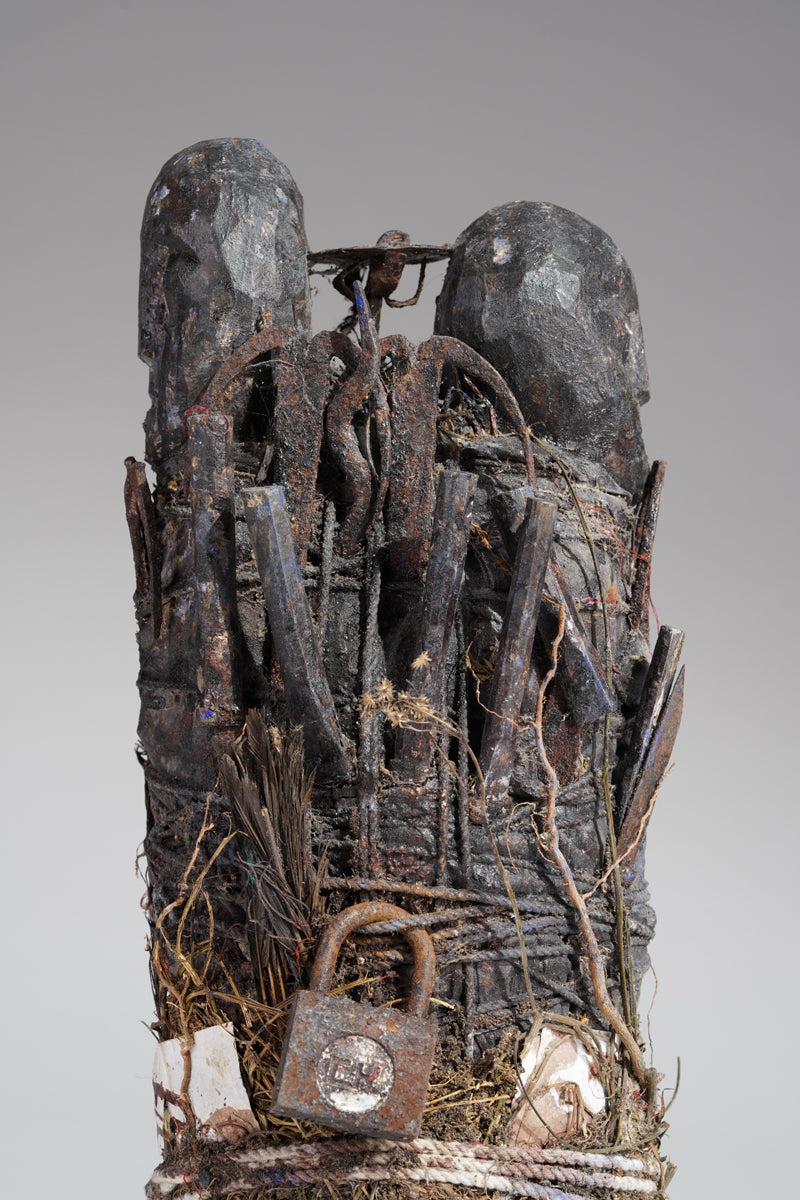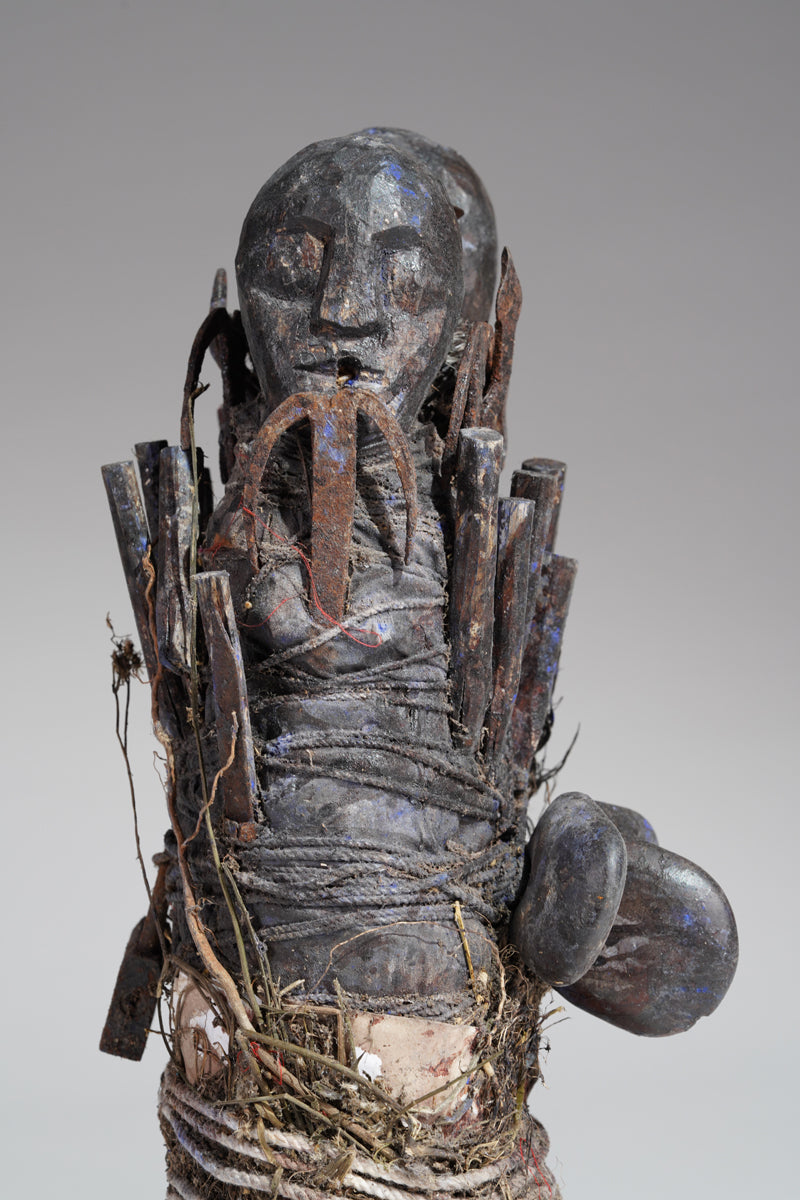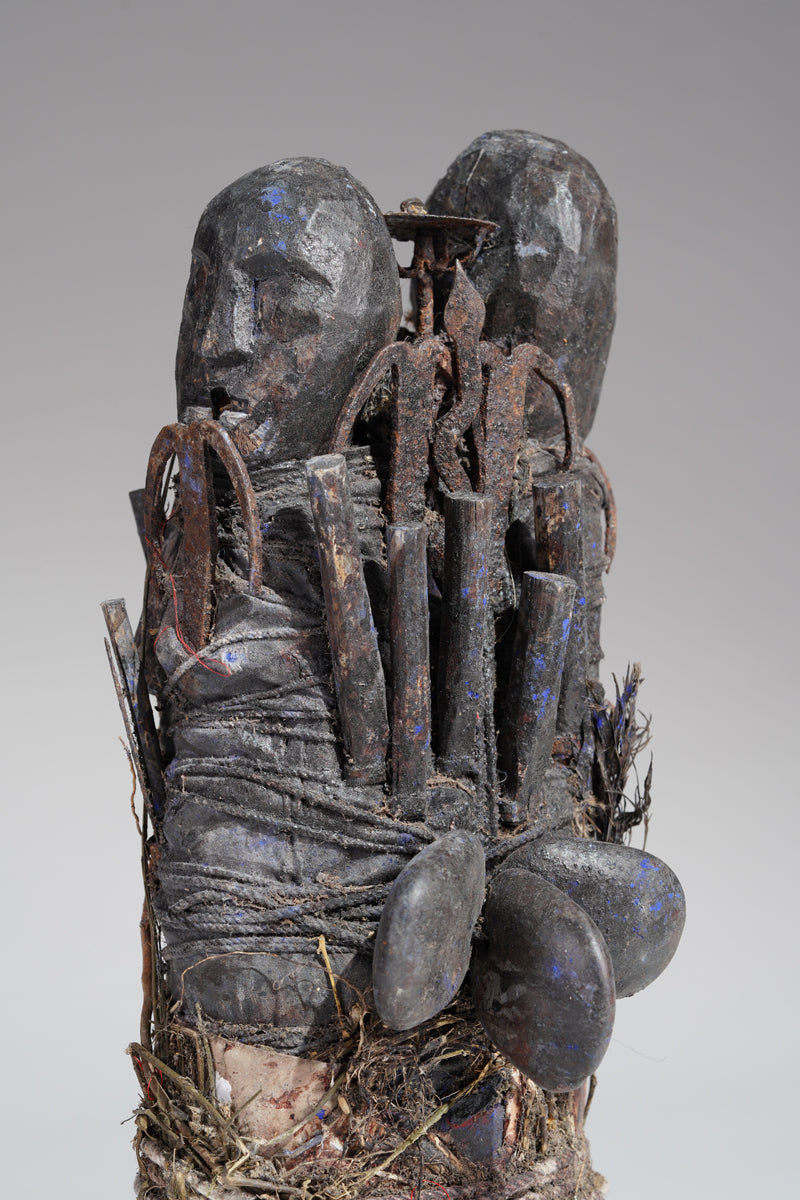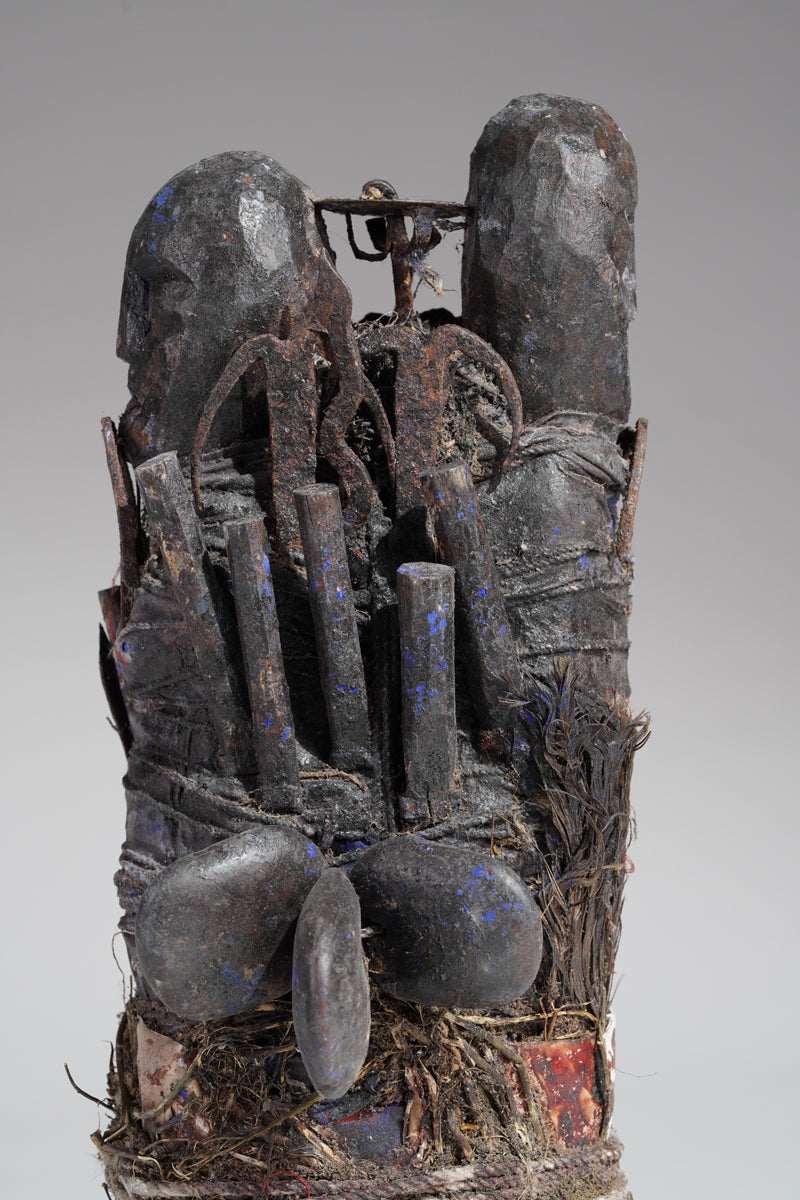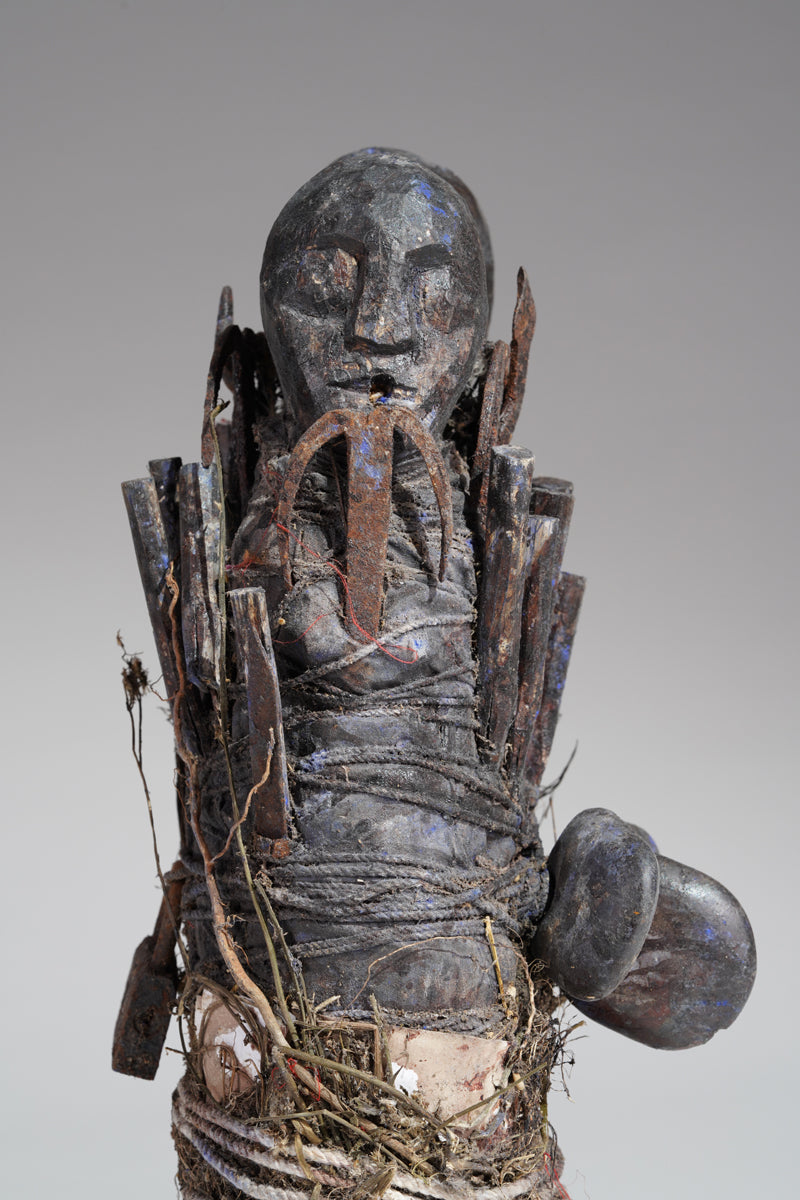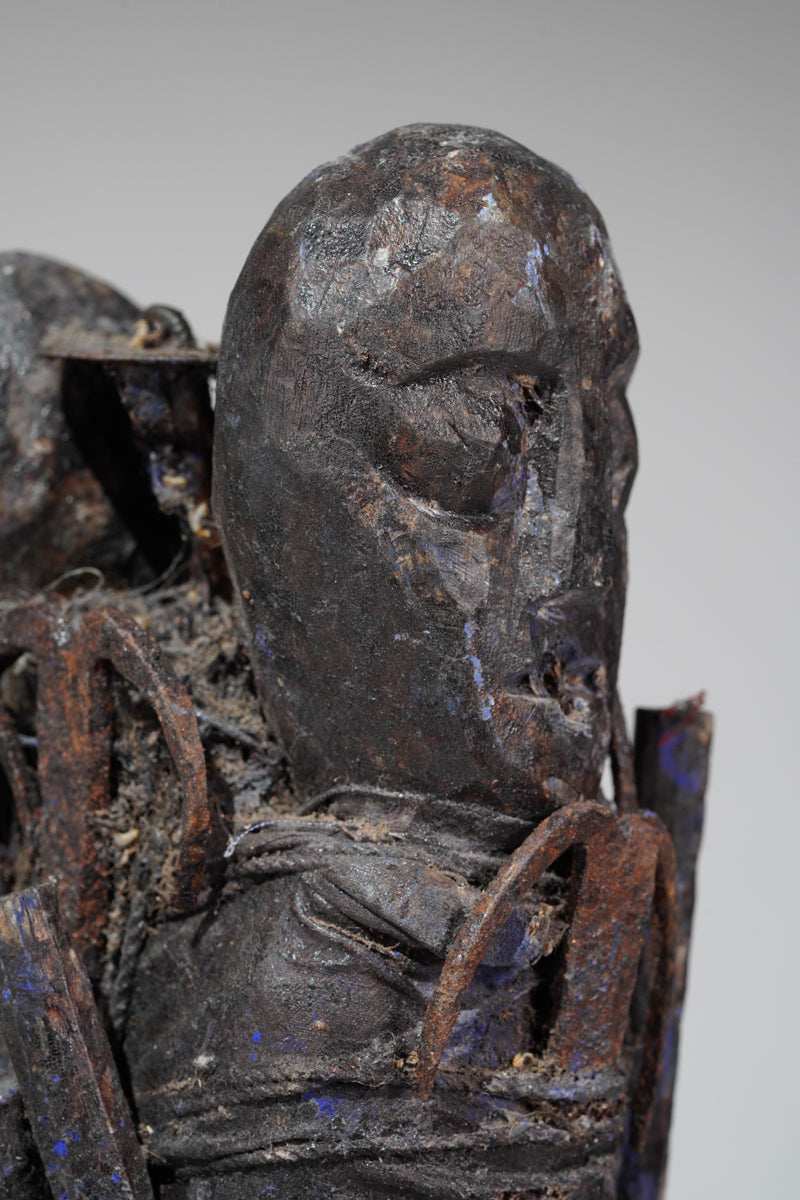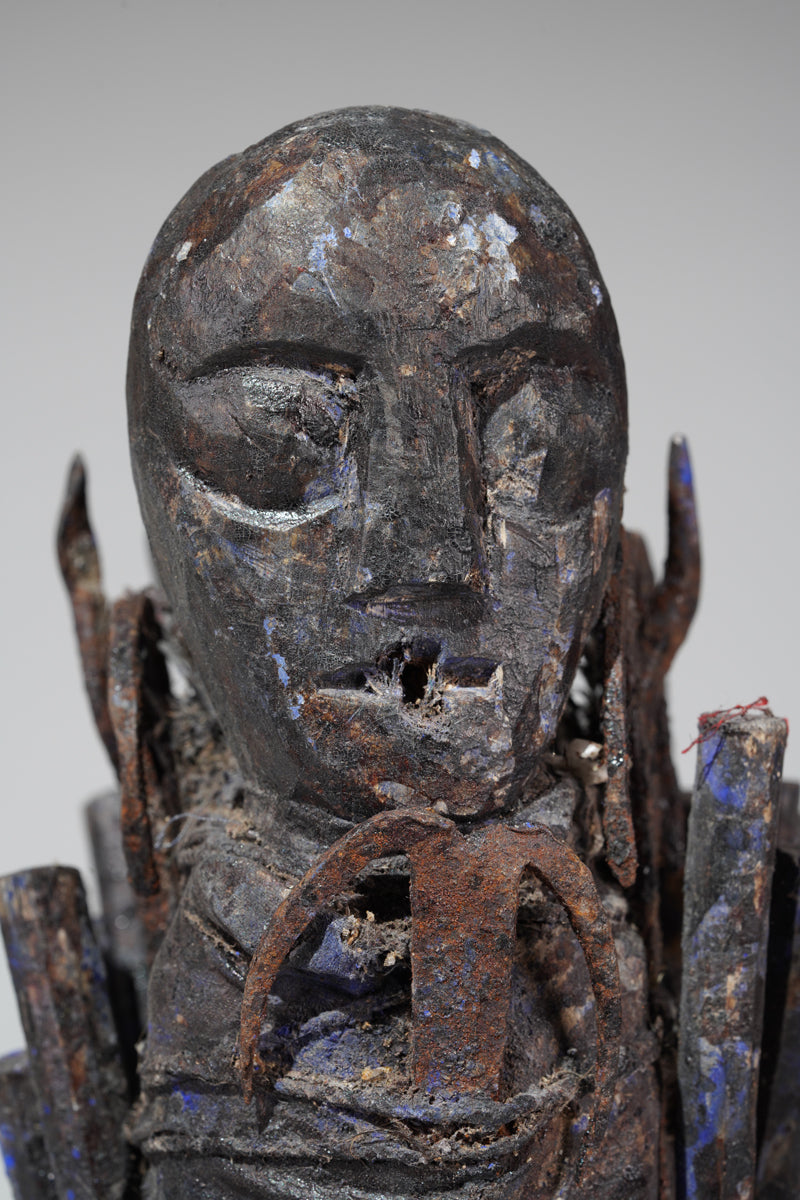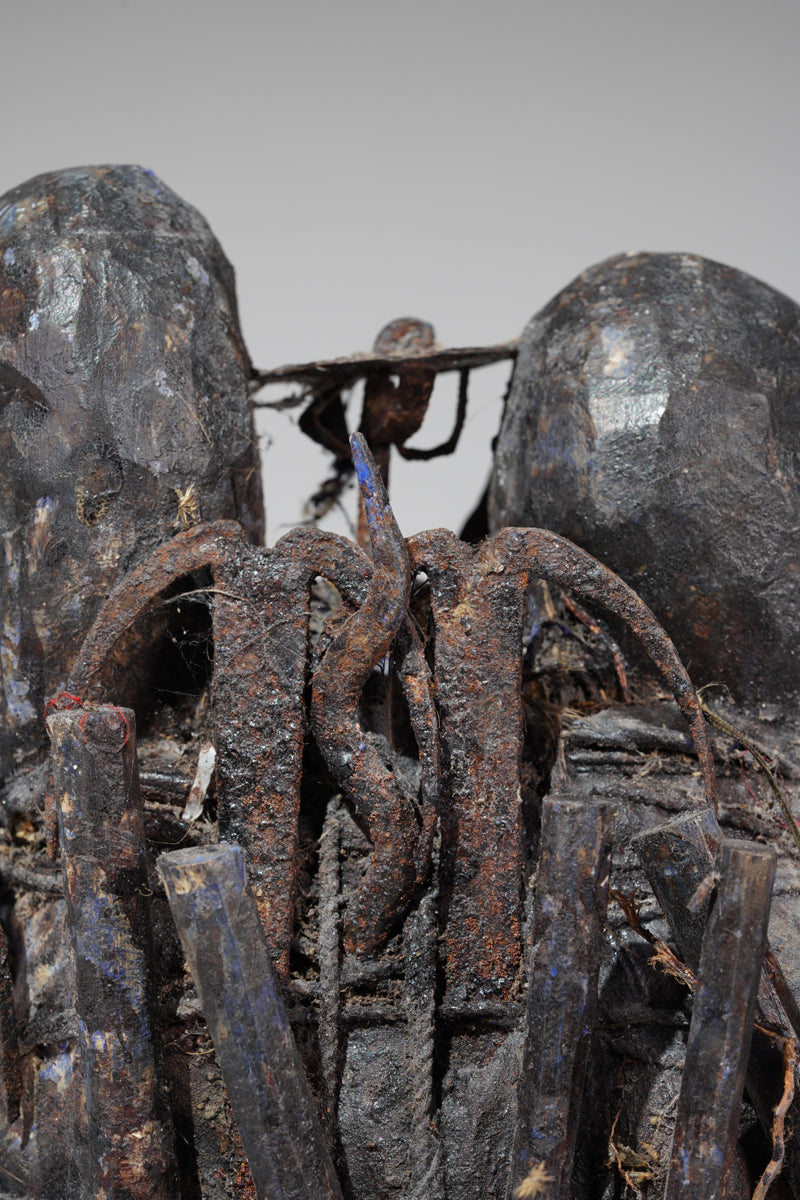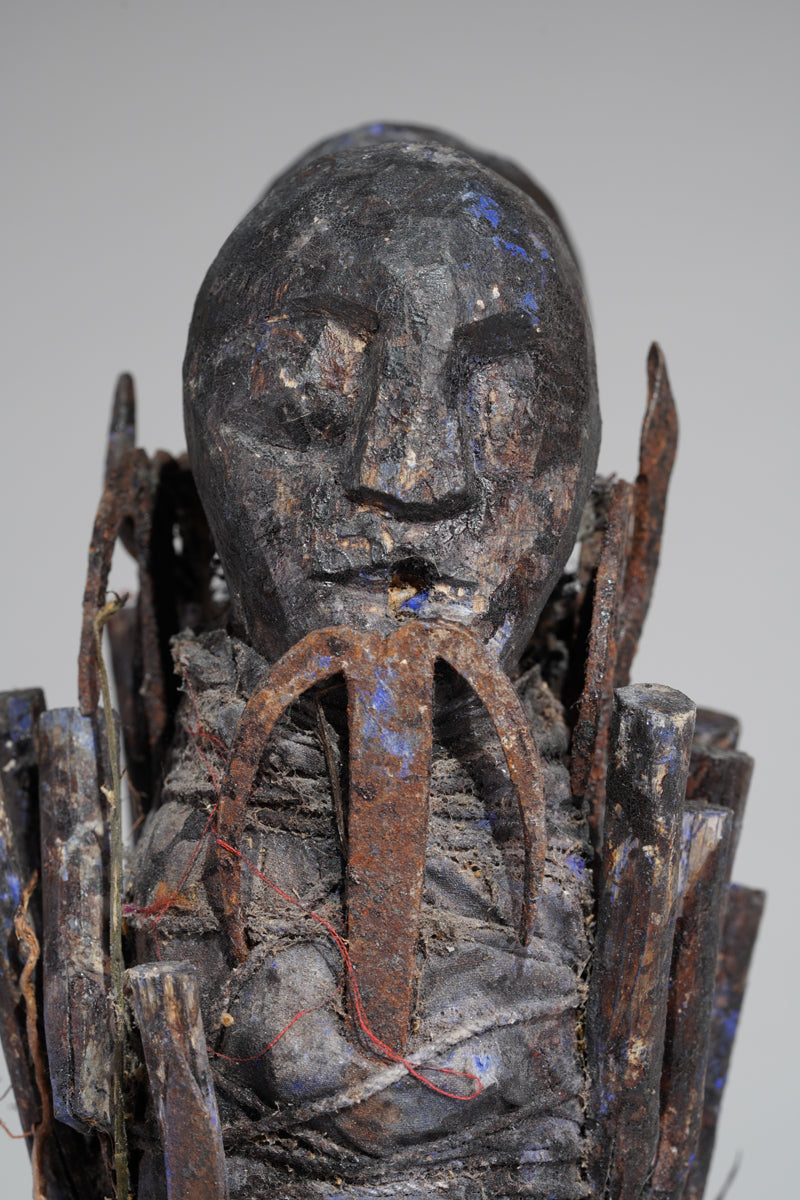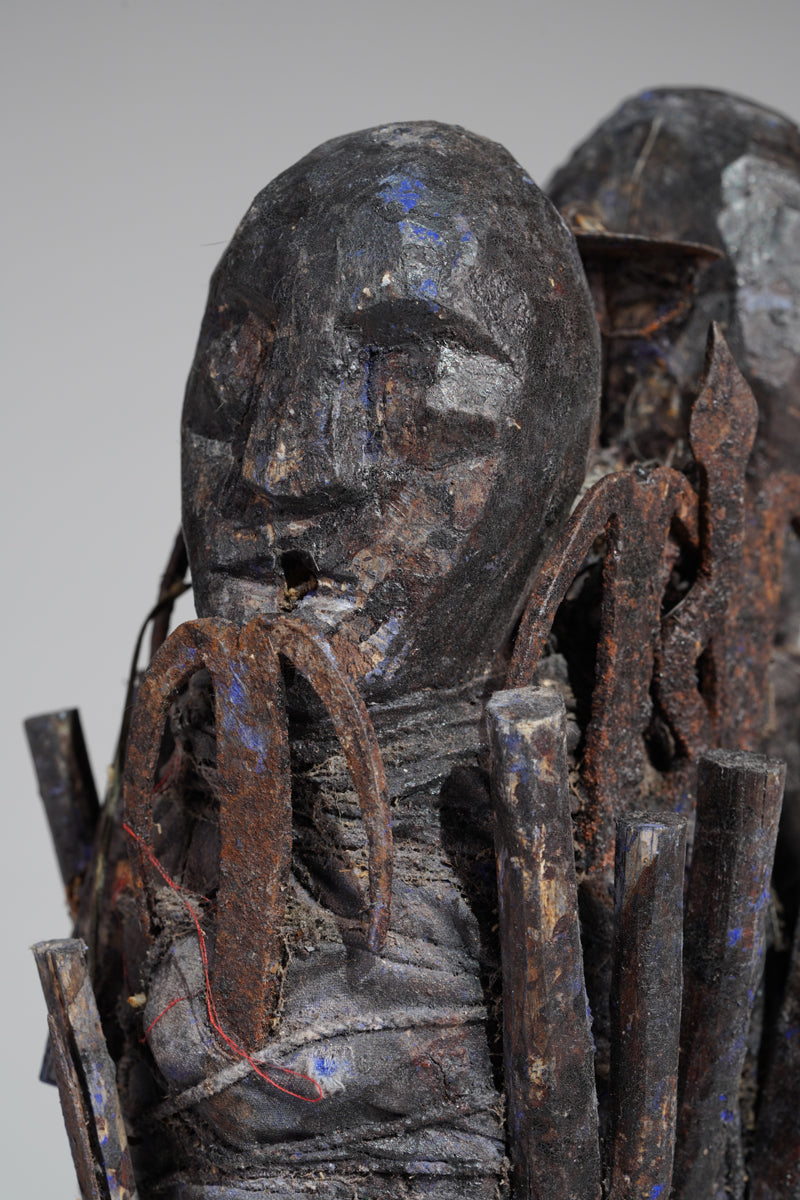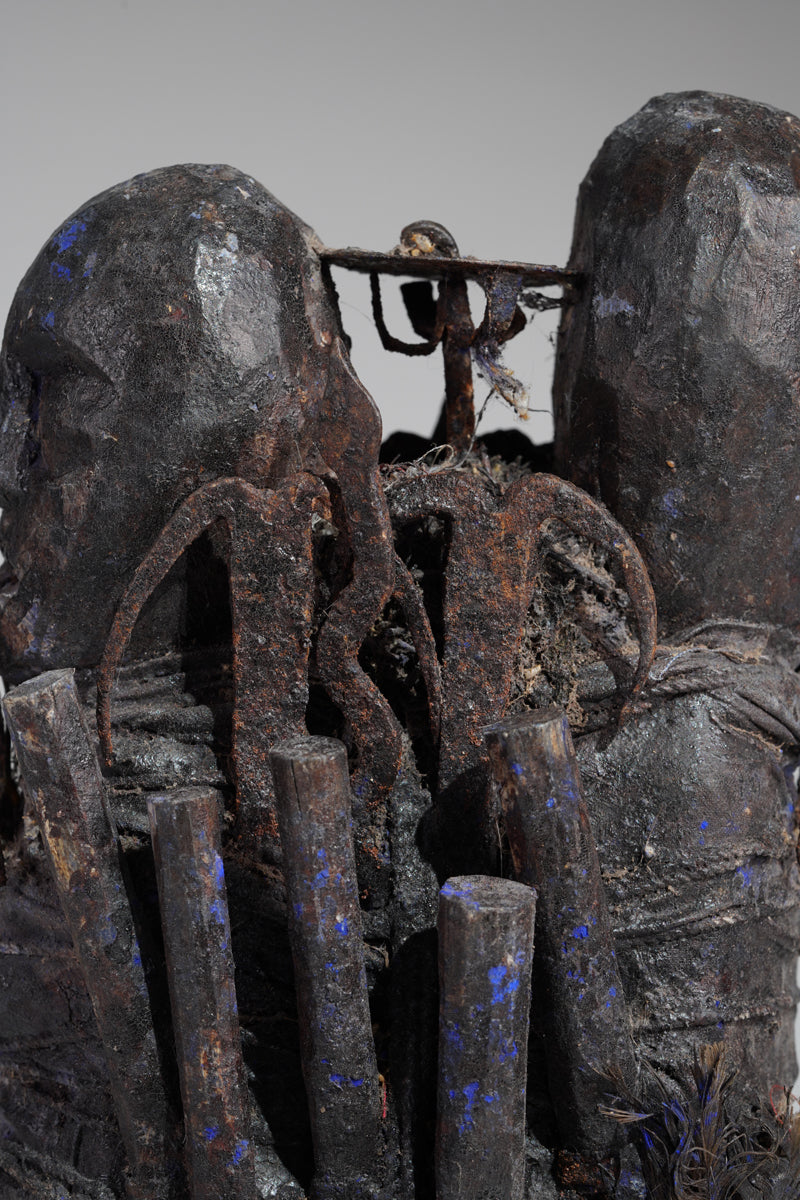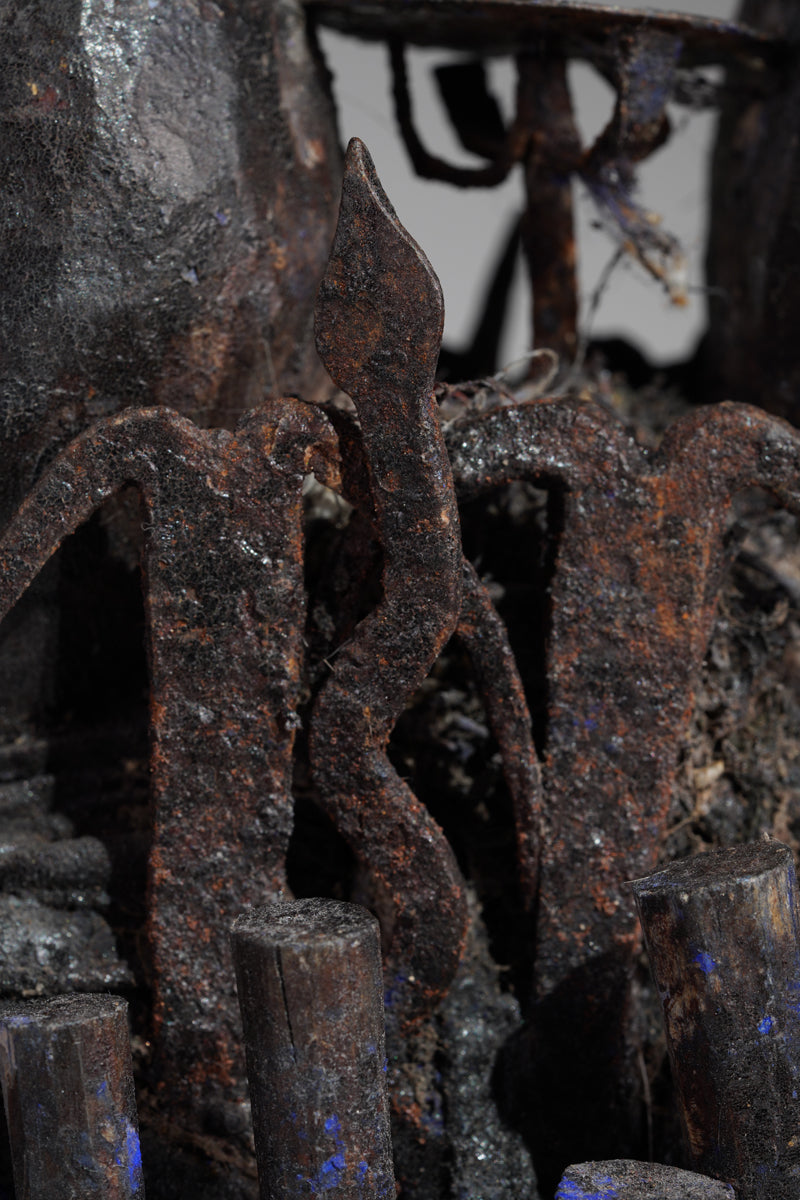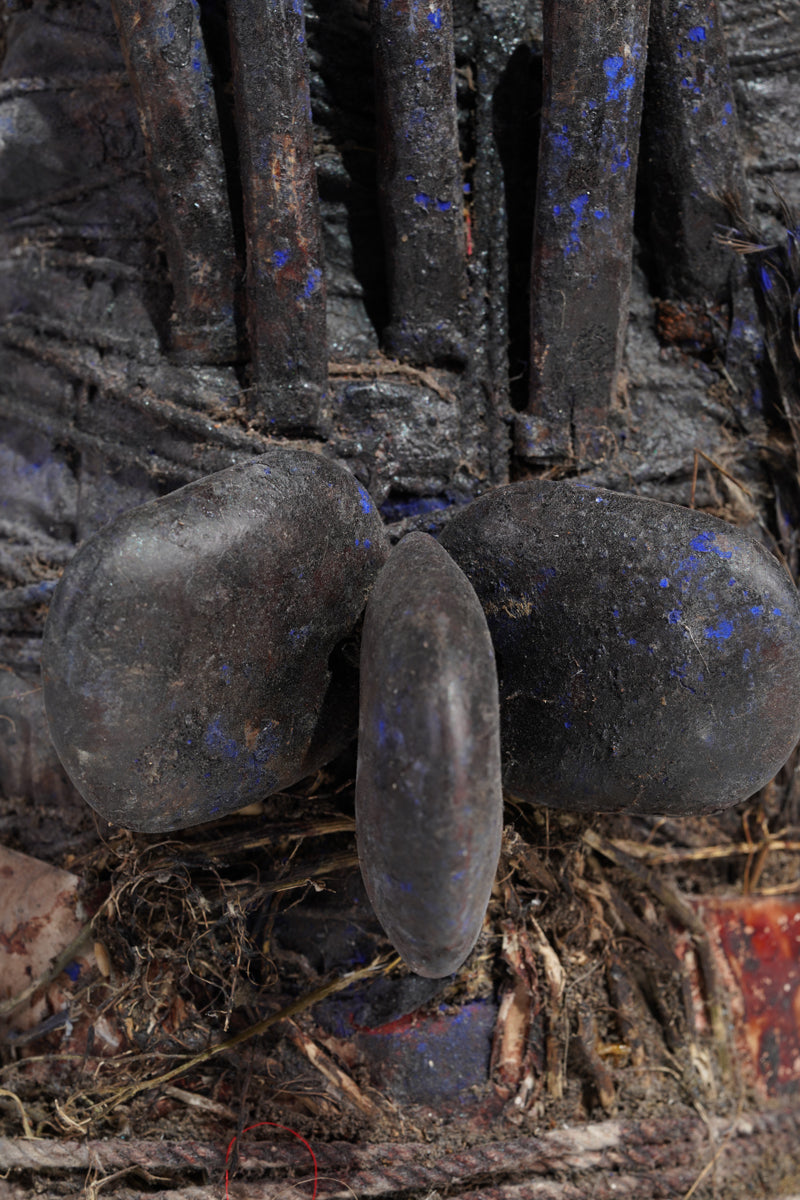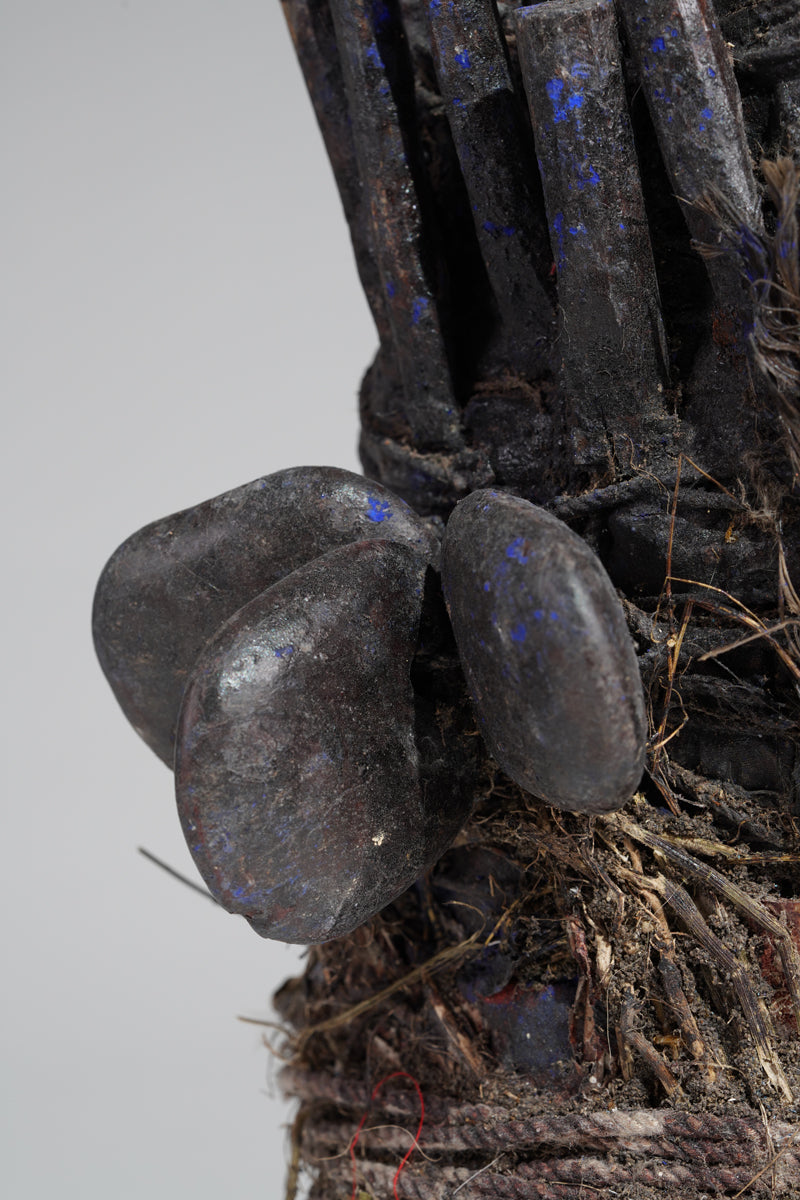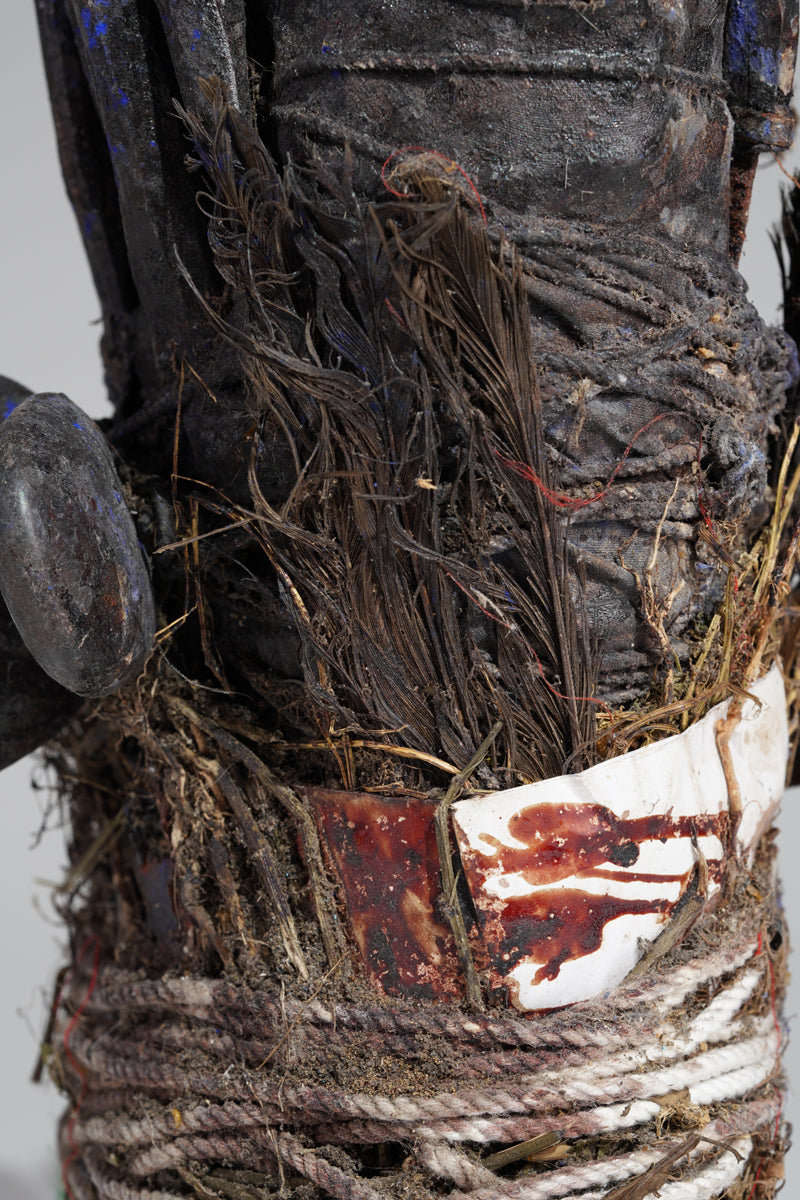Galerie Wolfgang Jaenicke
Fon fetish sculpture, Togo/Benin
Fon fetish sculpture, Togo/Benin
Couldn't load pickup availability
Fon fetish sculpture, Togo/Benin, Certificate of origin and provenance.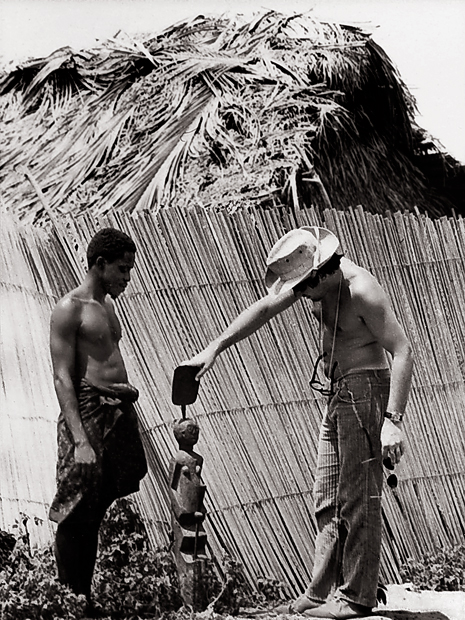
Jacques Kerchage during his researches in Togo/Benin
A self-taught galerist and connoisseur known for his exacting eye and profound knowledge of the Primitive Arts, Jacques Kerchache was during his life one of the most passionate and vanguard figures of the French art world. Born in 1942 in Rouen, he had precocious beginnings, opening his first gallery in 1960. From 1959 to 1980 he travelled frequently to Africa, Asia, America and Oceania, venturing in regions few other dealers dared to explore in search of exceptional works of art. It was during his first trip to Benin that he became fascinated by Vodun sculpture. This passion led him to bring together what would become one of the most significant existing collections devoted to African Vodun.
Excerpted from the catalog Vodun: African Voodoo,Fondation Cartier pour l’art contemporain, Paris, 2011
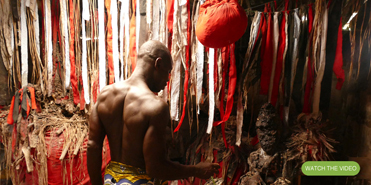
photo: wj
A Video Clip from a Voodoo-village of the boderdestrict Togo/Benin
While the term Vodun has been translated by scholars in many ways over time, my sources have suggested that its origins lie in the phrase “rest to draw the water,” from the Fon verbs vo “to rest” anddun “to draw water,” referencing the necessity to remain calm when facing whatever difficulties may lie in one’s path1. According to this Vodun philosophy, life is like a pool that humans find in the world into which we are born. Patience and calm are necessary if we are to effectively draw from the pool of water that defines our lives, if we are to conduct our lives in a manner that will bring one greatest fulfillment. Rather than simply rushing through life, it is incumbent upon one to keep one’s composure and to take the time to “breathe.” Following on the tradition of local women who will sit quietly by the side of the spring or river before collecting the daily water, in Vodun belief one is encouraged to take time for reflection. Like the serene, straight-standing human figure that serves as the base and center of bocio, encumbered often by potent additive materials, one is encouraged in these bocio and Vodun traditions to draw on one’s inner strength and serenity as one pursues one’s course in life...
Suzanne Preston Blier, African Vodun. Art, Psychology, and Power, University of Chicago Press, Chicago, 1995, p. 39 à 40.- Excerpted from the catalog Vodun: African Voodoo, Fondation Cartier pour l’art contemporain, Paris, 2011
Height: 39 cm
Weight: 1,5 kg























